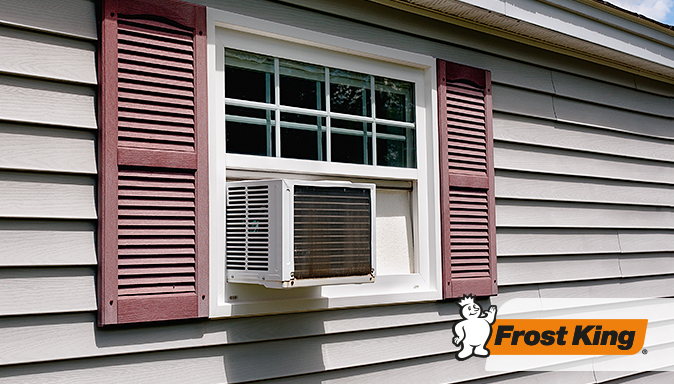Temperatures are expected to be hotter than normal in much of the US this summer. But temperatures aren’t the only thing that are soaring at this time of year. If you’re running your air conditioner 24/7 to keep your home cool, your electric bill will be soaring too.
To help you keep your cool while you’re keeping energy costs in check, we’ve got 5 easy ways to significantly slash your energy expenses…without sacrificing your comfort.
1. Optimize Your Air Conditioner
The biggest contributor to high energy bills during the summer is your air conditioner, but making sure it’s well maintained can help to control costs. If you have a whole house air conditioner, schedule annual professional maintenance to keep it running efficiently. You may also want to consider installing a smart thermostat to adjust your home’s temperature throughout the day so you’re not paying to run the AC when no one is home.
If you cool your home with window units, give them a quick tune up before you install them for the summer and insulate around them to keep the cold air in and hot air out. Watch this video for some quick tips on how to insulate your AC unit:
Whether you have a whole-house unit or window units, regularly clean or replace filters to allow for better airflow.
2. Embrace Natural Ventilation
Reduce your reliance on air conditioning and take advantage of cool breezes in the mornings and evenings by opening windows and doors to allow fresh air to circulate through your home. Ceiling fans are another excellent way to provide a cooling breeze and they use significantly less energy than an air conditioner. (But remember, fans cool people not rooms, so don’t leave them running in unoccupied rooms—they won’t do anything but run up your electric bill.)
You should also pull shades and drapes during the day to block direct sunlight and prevent heat gain.
3. Consume Energy More Efficiently
Be mindful of your energy use throughout the day. Get in the habit of turning off lights when you leave the room and switch off TVs, computers, and other electronics when you’re not using them.
Opt for natural light whenever possible, and if you haven’t already ditched the energy-hogging incandescent bulbs, make this the summer you switch to energy-efficient LED bulbs—not only do they use less energy to create the same amount of light as traditional bulbs, they give off less heat so they keep your house cooler.
Another painless way to cut energy costs is to be strategic about when you run appliances that generate significant heat, such as ovens, dishwashers, and dryers: use them during the cooler parts of the day or overnight to avoid heating up your home and putting an extra burden on your air conditioner.
4. Add More Insulation
You might think insulation is something you need to worry about in the winter, but adequate insulation is just as important during the summer months to keep all the air you paid to cool in your home. Look for gaps around doors and windows where air can espace and seal them with weatherstripping. Watch this video for step-by-step directions to seal doors and windows properly:
You should also check outlets and light switches on exterior walls, attics (especially around attic doors and hatches), walls, and basements for adequate insulation to keep temperatures comfortable inside.
5. Plant Smarter
Landscaping doesn’t just make your home look better: if you choose the right plants and plant them in the right place, landscaping can actually keep your home cooler. Planting trees on the south and west sides of your house provides natural shade, protects your home from the sun’s harshest rays and reduces the heat that gets into your home.
Want other landscaping ideas that save energy? Grow vines or climbing plants on pergolas and trellises to create natural shading for walls, windows and outdoor living areas, and add mulch or groundcovers to garden beds—it will make them look tidy while reducing heat transfer from the ground to your home.
